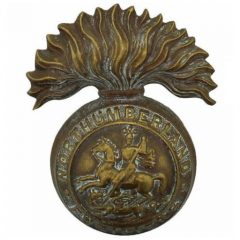“The whole Battalion was infected with youthful vigour and expectancy, from our young Commanding Officer (Capt JV Gregory, MC), with youthful veterans like Essex 1 , Nicholson 2, and Davison 3, other older but no…
You must be logged in to view the content of this Chapter.
Footnotes
- William F. Essex -
- William Hubert Nicholson
- Davison
- 2nd Lt H. Stewart -
- Harold E. Bull -
- Wilfred Atkinson Kipling
- Capt John Vessey Gregory
- Capt John Stanley Jefferson Robson
- Arrewage – A cluster of farms and houses 2km northwest of Merville
- Bois = Forest
- These positions, often referred to as strong-points or redoubts, were situated in houses or farm buildings
- 2nd Lt Wilfred Atkinson Kipling previously served with the DLI (4515). Commissioned 31 Jul 17
- The War Diary states map reference L.30.d, a position on the east side of Estaires, so it is more likely to have been K.30.d on the east side of Merville
- The 55th Divn was comprised of the 164th, 165th and 166th Bdes
- The 40th Divn was comprised of the 119th, 120th and 121st Bdes
- Casualties for the Portuguese Expeditionary Force were in excess of 7000 men, approximately 35% of its fighting strength
- Most likely all farm buildings, two of which (Riez Bailleul & le Drumetz) can still be found on modern maps
- This, in essence, meant that the Coys spread out in an effort to reduce casualties should they come under artillery fire
- 2nd Lt W. Anderson
- 2nd Lt Archibald Nelson Lawson
- The 4th NF War Diary States map reference: L.29.a.0.4, but as this is north-west of Estaires it is likely to be an error
- Sgt John Wigham
- Lt William Hubert Nicholson
- The 51st Divn was comprised of the 152nd, 153rd and 154th Bdes
- 2nd Charles Montague Davison
- 2nd William Fitzroy Essex
- The German 35th Divn. was recruited primarily in the southern part of West Prussia, and included a relatively high percentage of Poles
- 2nd Lt Lawson made a good recovery from his severe wounds in a German hospital and was repatriated in …………...
- 2nd Lt Harold E. Bull
- John Chatt Napier enlisted in the DLI (275131) and embarked for France - 23 Apr 1917. He was killed in action on 29 Oct 1918
- 2nd Charles Montague Davison
- 2nd William Fitzroy Essex
- The German 35th Divn. was recruited primarily in the southern part of West Prussia, and included a relatively high percentage of Poles
- 2nd Lt Lawson made a good recovery from his severe wounds in a German hospital and was repatriated in …………...
- 2nd Lt Harold E. Bull
- John Chatt Napier enlisted in the DLI (275131) and embarked for France 23 Apr 1917. He was killed in action on 29 Oct 1918
- Nicknamed the ‘Silent One’ as their was no warning as the shell approached
- Lamotte Chateau
- Capt Charles George Gasson -
- 2nd Lt William Lamb McClean (1889-1971)-
- 2nd Lt A. Marshall -
- 2nd Lt Albert Evelyn Morris -
- Lt Jerome M. Goodbody (Dublin Fusiliers) possibly 2nd Bn, who were reduced to cadre strength on 14th April
- 2nd Lt John Austin Greaney – Connaught Rangers – possibly 6th (Service) Bn who were reduced to cadre on 13th April
- Lt H. Willie -
- Lt Lionel Sidney Cheeseright MC, -
- Lt Robert Henry Smallwood, -
- 2nd Lt Henry Roleson Tully -
- 2nd Lt James A MacIntyre -
- 2nd Lt C. Tolkien – Captured 27th May 1918 repatriated 18 Dec 1918
- 2nd Lt Donald Firth -
- Capt Arthur Membry (Royal Irish Rifles) -
- 2nd Lt William Joseph Maxfield – Formerly 11th Manchester Regt - 7892 Pte
- 2nd Lt H.E. Findlay -
- 2nd Lt John William Marsden -
- Although an Irish Home Rule Bill was brought before Parliament in April 1912, the transition to Home Rule was suspended until the end of WW1 with the agreement of the Irish Nationalist Party. Some Irishmen did not accept the decision and chose to fight the British in the 1916 Easter Rising, however the majority recognised Germany as a great threat and voluntarily enlisted in the British Army. However, the capture and execution of the Easter Uprising leaders without trial or prior notification elevated them to heroes of the Irish cause and by 1918 Sein Fein was the leading Nationalist party in Ireland. Sinn Fein had many supporters amongst the Irishmen serving in the British Army, hence the Conference notes acknowledgement that many Irishmen were transferred to the 50th Divn and were considered a potential threat
